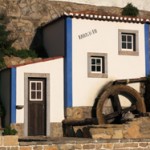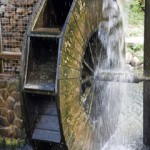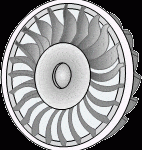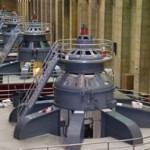
Hydro power has tremendous potential in supplying the whole of the planets energy need just using flowing water. Hydro power uses the kinetic energy of moving water to create energy and is one of the most efficient and cost effective of all the renewable energy sources available for the production of electricity. Because of this, it is also the most commonly utilized alternative energy source in the world today, with dams and hydro power stations providing a large majority of all our energy needs now and in the future. From the simplest of waterwheels to the largest hydro power station, the power of running water is one of the easiest to install, control and the cheapest to run

Hydro energy source from rivers, lakes and reservoirs can all be used to generate clean renewable energy. Hydroelectric power is a proven and mature technology that has been supply electrical power around the world for many years. But small scale hydro power plants used in run-of-river or low-head hydro schemes still remain under exploited. Hydropower energy based on renewable sources, reduces pollution and emissions of greenhouse gases thereby having positive impacts on our quality of life. Hydro energy production is an important resource for many countries and was once the only renewable energy source being exploited

Small scale hydro power schemes exploit water as a renewable resource and are characterised by their use of local, small hydropower plants installed on small rivers and pipelines so do not require the expensive construction of dams or reservoirs also making them environmentally friendly. Low-cost small scale hydro power plants generate electrical energy for one or more housholds from a single stream. Due to their simple construction and low head pressure, small scale hydro installations tend to use Turgo turbine designs.

Efficiency is a critical consideration in the design of hydro turbines so they range from one’s which use curved or flat blades to some which are shaped like small buckets. A hydraulic turbine is the main component of any hydropower system so choosing the right turbine for the job is important. Power generation from hydraulic turbines depends on the availablity of water head, penstock design, water velocity and the number of jet nozzles directing water to the water turbines blades or buckets. Typical water turbine designs have names of Pelton, Francis and Kaplan turbines after their designers.

Waterwheel designs use shaped buckets or blades transfer the kinetic energy of flowing water into a rotary movement of a shaft. Waterwheel deigns include overshot, breastshot and undershot designs use the gravitational effect of water pushing against the buckets or blades in different ways. Many factors influence the performance of each waterwheel design including are the number of buckets, wheel diameter and width, bucket shape and rotational speed.

Hydro energy generation uses the gravational movement of water using conventional hydro, run-of-river, or pump-storage systems to funnel the water through hydro turbines in order to generate electrical power. Hydro energy ranges from large scale hydropower facilities using dams, reservoirs and storage, to small scale run-of-river projects in streams and rivers making it one of the most mature renewable technologies for electricity generation around the world. Hydro energy is the sustainable and safe exploitation of water with the different types of turbines defining the system.